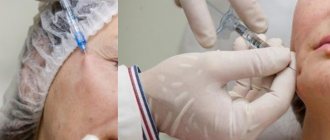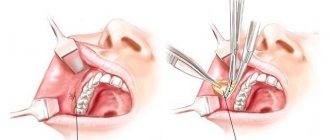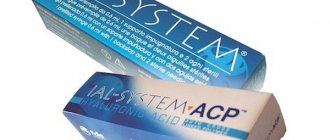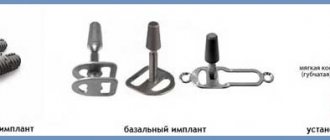What is frenulotomy?
Frenulotomy is a simple operation, indicated for such a feature as a short frenulum of the genital organ. During this operation, the frenulum is transversely dissected and then sutured in the longitudinal direction. Thus, it stretches to its normal length. As a result, only a thin seam is visible from the inner surface of the foreskin, everything looks quite natural. The entire operation lasts no more than 20 minutes, it is not a complex surgical procedure, and is performed under local anesthesia.
Correction of the frenulum allows you to eliminate pain symptoms and eliminate the risk of ruptures and bleeding during erection. The procedure is quite simple, and the development of complications after it is extremely rare.
Where in Ufa can plastic surgery of the foreskin frenulum be performed?
At the Yuhelp clinic, operations are performed by highly qualified surgeons with extensive practical experience. We have created comfortable conditions for patients to stay in Ufa, and also provide constant medical supervision at all stages of treatment.
Plastic surgery of the male genital organ requires professionalism and accuracy from surgeons. Only our specialists can guarantee patients an excellent plastic result, as well as restoration of the aesthetic and physiological functions of the frenulum of the penis.
Indications for frenulotomy
A short frenulum can be a congenital or acquired pathology that occurs as a result of trauma to the penis or inflammatory processes. Pathology provokes:
- drooping of the head of the penis, discomfort and even pain during erection;
- premature ejaculation;
- there is a constant huge risk of tearing or rupture of the frenulum, accompanied by heavy bleeding.
It is better to perform a frenulotomy of the foreskin before the frenulum ruptures. And rupture of the frenulum if it is not long enough is almost inevitable. As soon as a man begins to perform intense friction during intercourse or masturbation, he risks tearing or tearing the frenulum. And using additional lubricant will not help here.
Some male representatives mistakenly believe that a good solution would be careful behavior and avoidance of intense friction. Even if you try to control the situation and perform only slow frictions, on a subconscious level there will still be fear and expectation of severe pain due to a tear or rupture. Of course, in such conditions it is unlikely that you will be able to get full satisfaction from sex.
Indications for surgery:
- An erect penis bends in such a way that the head bends downwards.
- Retracting the skin fold is difficult, causing pain and a feeling of tightness.
- Painful frictions cause discomfort and interfere with normal sexual intercourse.
- Frequent frenulum tears and bleeding.
- Phimosis or paraphimosis.
- Early ejaculation.
Frenulotomy is a simple operation and is often performed on an outpatient basis. Local anesthesia is usually sufficient, but in some cases general anesthesia may be necessary. The procedure does not last long, about half an hour.
Before the operation, the patient takes all the necessary tests, including HIV tests, and undergoes an examination. After this, if there are no contraindications, he goes to the operating room.
Reducing the risk of contracting STDs and developing urinary tract infections
The first advantage of circumcision is that it reduces the risk of contracting sexually transmitted diseases. During the procedure, tissues that are most sensitive to infectious agents are removed. According to statistics, the risk of becoming infected with the human papillomavirus is reduced by 32-35%, and genital herpes – by 28-34%. According to other data, in Israel, where circumcision is very popular, syphilis is less common among men.
Circumcised men suffer from genitourinary infections 10 times less often. This is due to the fact that they do not have a foreskin, under which harmful bacteria can accumulate.
How is frenulotomy performed?
Surgery is performed on an outpatient basis under local anesthesia for adult men, or with general anesthesia for adolescents. The duration of the manipulations is no more than 20 minutes. The patient is asked to assume a supine position on the operating table and the surgical area is disinfected.
With local anesthesia, the anesthetic is injected into the tissues of the penis, with general anesthesia - into a vein. As soon as it begins to act, the surgeon dissects the frenulum of the penis across, allowing the skin folds to straighten to the required size.
After this, the edges of the incisions are sutured with threads, which will self-resolve in the postoperative period. If there are scars, they are first excised. Upon completion, a napkin with an antiseptic is applied to the penis, which can be removed no earlier than after 12 hours.
The operation can be performed using a conventional scalpel, radio knife or laser.
Classic frenulotomy
Classic method of penile frenulum correction:
- First, a transverse dissection of the frenulum is made.
- Then the edges of the wound are stretched in the shape of a diamond.
- The final step is to adjust the skin tension and apply sutures.
The suture is applied with the same threads that are used in maxillofacial surgery. By 21 days they usually completely resolve or fall out. The finished suture is filled with surgical glue to avoid infection and separation of the edges. Such a wound can be wetted within a day; when wiping, simply blot it with a towel. If the seam is simply treated with brilliant green, then it is not recommended to wet it for about a week.
Frenulotomy using laser
Frenulotomy using a radioknife The intervention is bloodless due to the fact that the laser cauterizes the edges of the wound, eliminating bleeding.
Unfortunately, this operation has one drawback, which is the risk of divergence of the edges of the wound during an erection.
Application of radio knife
The use of a radio knife involves exposure to high-frequency radio waves. They allow the destruction of skin growths and neoplasms, excluding the impact on healthy tissues along with blood vessels. Thanks to this, there is no risk of purulent processes and hematoma. If indicated, the operation can be combined with other techniques aimed at eliminating scar tissue or narrowing the foreskin. At the same time, circumcision of the foreskin is also carried out. It is used if the surgeon notes the impossibility of completely exposing the head due to an excessive amount of foreskin tissue.
Circumcision and removal (excision) of the frenulum
Surgical intervention to circumcise the frenulum of the foreskin is not considered mandatory if there are no alarming symptoms. But most experts advise carrying out this procedure as a preventive measure.
Carrying out the procedure
- in circumcision of the foreskin followed by frenuloplasty, mainly for phimosis;
- in excision of the frenulum followed by plastic surgery to restore the anatomical length;
- in excision of the frenulum of the foreskin.
Circumcision of the foreskin and frenulum together is carried out for medical reasons or for religious reasons. If circumcision is performed for medical reasons, the most common reason for the procedure is phimosis - this is a pathological narrowing of the foreskin, which makes it difficult to expose the head of the penis. Phimosis can also be either congenital or acquired as a result of diseases or injuries.
In its presence, the patient may experience difficulties during sexual intercourse, urination, and also very often suffers from swelling and inflammatory processes.
The main danger of this disease is the formation of cracks in the frenulum and foreskin, which can turn into scars and welts after healing. In some cases, the tissues of the glans penis adhere to the foreskin, which can cause pain when trying to open the glans. During the operation, the foreskin and frenulum are excised, which can lead to the return of anatomical functions. Also, phimosis can be operated on with subsequent preservation of part of the foreskin. Circumcision can also be performed simultaneously with frenuloplasty.
Indications for frenulum circumcision
The operation of circumcision of the foreskin and frenulum, in contrast to frenulotomy, is performed not only in adults, but also in children and infancy, if indicated.
Operation techniques
At the moment, circumcision of the frenulum of the foreskin can be carried out using a standard method using a scalpel, as well as using laser technologies.
The operation is carried out over thirty to forty minutes. The likelihood of complications is minimal, and in most cases there are none at all.
During the recovery period, it is very important not to violate hygiene, and also to follow all established instructions and doctor’s advice. The scar after surgery can heal very quickly and becomes almost invisible. Stitches are usually applied using special self-absorbable threads; they can disappear after ten days. After healing and rehabilitation, it will take fourteen to twenty-one days, after which you can continue to be sexually active.
How to prepare for frenulotomy?
Doctors recommend giving up alcoholic beverages a week before surgery. Some clinics prescribe antibiotics for 2 days to protect against infectious inflammation.
In 2-3 days you need to remove hair from the groin area. To avoid cuts, you can use hair removal cream.
In preparation for frenulotomy, it is necessary to donate blood the day before (for HIV, hepatitis, syphilis, general analysis, coagulogram) and a test for lidocaine. The operation is not abdominal, so there is no need to undergo other standard preoperative examinations. An ECG is only required for patients over 40 years of age.
On the day of surgery you can eat and drink. The manipulation is performed under local anesthesia. The doctor injects lidocaine under the frenulum (to a depth of 2 mm) and waits until the target area is completely numb.
Reducing the risk of contracting HIV infection
According to statistics, the majority of men who contracted HIV through sexual contact had uncircumcised foreskin. The increased risk of infection is explained by the fact that this part of the head of the penis is most susceptible to microtrauma, through which infection occurs more easily.
The cells of the foreskin mucosa are most vulnerable to HIV. Therefore, circumcision was recognized as a method of preventing infection with this infection. Although there is an opinion that this advantage only applies to residents of Africa, since countries on other continents have free access to condoms that are more effective in protecting against HIV.
Rehabilitation after frenulotomy
After frenulotomy, the patient rests for several hours in the ward, then he is sent home. After 2-3 days you can go to work, if it does not involve lifting heavy loads (the seam may come apart).
There is usually some slight swelling or bruising in the first 24 hours, which goes away within a few hours. Within two days, a few drops of blood may come out of the suture. This is fine. They need to be blotted with a sterile napkin and observed over the wound.
Antibacterial therapy is usually not required. The course of antibiotics is replaced by antiseptic ointment "Levomekol". A thin layer of it is applied to the suture area once a day for 5 days. You must appear for a dressing change the next day, and for a final examination after 10 days. The pain goes away completely after 2 weeks. During an erection, slight discomfort may remain for 3-4 weeks.
During the rehabilitation period, the patient should adhere to the following recommendations of the attending physician:
- carry out hygiene measures after each visit to the toilet and use an antiseptic solution prescribed by a doctor for this;
- take a course of antibiotics to prevent the development of purulent infections;
- during rapid healing, do not use fat-based ointments, as they can prolong the rehabilitation period;
- visit a urologist a week after the operation so that he can determine the need to remove the remaining threads, which should be completely resolved by this time.
In addition, during the recovery period you should avoid:
- physical activity and sports;
- visits to baths, saunas, swimming pools;
- taking baths; sexual intercourse and masturbation.
- The latter is necessary in order to eliminate the risk of seams coming apart.
Possible complications after surgery
Foreskin frenuloplasty is a simple procedure. Reviews from men after surgery indicate the absence of complications. However, if during the manipulation the doctor made a mistake or the man did not follow the recommendations after the intervention, then negative consequences develop:
- infection resulting in an inflammatory process;
- seam divergence;
- intense bleeding from the wound;
- allergy to anesthesia medications.
- pronounced pain in the penis area;
- bleeding at the suture site;
- severe swelling of the shaft of the penis;
- postoperative scarring;
- unsatisfactory appearance;
- penetration of infection into the reproductive organ.
In most cases, complications are not dangerous and are treated on an outpatient basis.
Contact with water should be avoided for a week after frenulotomy. To do this, you can put a condom on the penis while swimming. Having sex is allowed only after complete healing, when a pink scar forms at the site of the wound. Sexual intercourse should be carried out carefully during the first month, it is recommended to use a lubricant.
Plastic surgery (frenulotomy) on the short frenulum of the penis at the Juhelp clinic
We provide medical care to highly qualified specialists who perform surgical interventions with a minimal incision, which significantly reduces the risk of complications. After completion of penile plastic surgery, our patients are under the supervision of doctors for some time. They receive comprehensive consultations regarding the specifics of the rehabilitation period after plastic surgery. Every patient who contacts us is guaranteed polite treatment and modern medical care, allowing us to achieve excellent treatment results.










